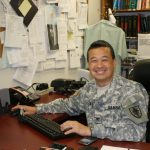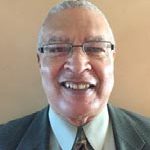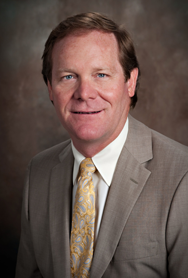Afsaneh Rabiei

Rocco Armonda

See the Video: HERE
Henry Marsh

See the Video: HERE
Geoffrey Ling

Colonel honored with humanitarian award from the Brain Mapping Foundation for work with TBI FALLS CHURCH, VA (June 11, 2012) — U.S. Army Colonel Geoffrey S. F. Ling, M.D., Ph.D., who has been at the cutting edge of brain injury research since the mid 1990s was awarded the Humanitarian Award from the Brain Mapping Foundation in a ceremony in Toronto, Canada earlier this month. Ling is a professor and the interim Chairman of the Department of Neurology at the U.S.’s only military medical school–the Uniformed Services University (USU) and also the Program Director at the Defense Advanced Research Projects Agency (DARPA). Ling was the Army’s only neuro-intensive care specialist for many years. Therefore, he has had the opportunity to remain at USU since 1995. His expertise was needed to teach and train the medical students. “Colonel Ling is a remarkable scientist and a compassionate physician who has helped train the finest doctors at USU,” said Ret. Vice Admiral Adam S. Robinson, Director of GPS Program of the Brain Mapping Foundation. “I am blown away by receiving this award,” said Ling who is regarded by many as the Army’s premier subject matter expert on traumatic brain injury (TBI). “It was totally unexpected and is a tremendous honor.” Ling led the building of the neuro-trauma laboratory at USU in the 90s where they primarily studied TBI. He has deployed multiple times to Afghanistan where he treated countless service members and civilians. He said that Operations Iraqi and Enduring Freedom made TBI a big deal due to the nature of the injuries coming from those theaters. “The wars gave the study and treatment of TBI legs,” said Ling. “But, I had already been studying it for years.” Ling who is officially assigned to a critical care billet at the USH has published more than 150 publications. He also wrote the TBI chapter in the Cecil Textbook of Medicine, which is regarded by many in the medical field as “the granddaddy” of general internal medicine texts. He also helped author the Department of Defense/Veteran’s Administration’s (DOD/VA) guidelines on TBI. Additionally, because of his background in intensive care, Ling also has the opportunity to provide direct patient care. One of his first TBI patients in Afghanistan was a little girl who had fallen off of a roof. “That’s one of the great things that I get to do.” he said. “I have the ability to actually take care of patients,” said Ling. “We’ve created a system of care for TBI that is the best in the world,” said Ling. “I’m very proud of the military system of care for TBI. The military does this better than anybody,” said Ling. Ling gave this example: “Take a kid who plays soccer. The boy gets hit in the head. He’s taken to a local hospital. He may or may not see a doctor. They may send him home without a scan. Three or four days later, the kid doesn’t feel right. He’s having headaches. Nobody knows what to do.” On the military side, Ling said, the same kid will undergo a full neurology screening, be seen at a concussion care center, and receive training on mild TBI. “Our model should be the standard,” said Ling. “We take care of TBI patients better than any hospital in the U.S.” Ling also practices at Johns Hopkins Hospital where he did his neuro-intensive care training. “Hopkins says we [the military] are the best,” said Ling. “We want everybody to adopt our system. TBI requires a system of care. The military has that system,” he said. Ling was on all four of former Chairman of the Joint Chiefs of Staff Admiral Michael Mullen’s “Gray Teams” that were established to look at the state of TBI in the military. Additionally, he was on the team of physicians who treated U.S. Representative Gabrielle Giffords who was shot in the head in 2011. “Her primary doctor, Dr. Peter Rhee, was a former Navy Captain trauma surgeon. He got his experience on the ground in Fallujah, Iraq. He was totally in control and knew exactly what to do,” said Ling who expects Gifford’s condition to continue to improve. “She got the best military care for her brain injury at the hands of a military doctor,” he said. Ling said that TBI has been around forever. But, gained prominence because of the lingering wars. “It [TBI] was a problem asking for an answer,” he said. “So, I got involved.” “The wars gave TBI traction within the DOD. That got us the resources we needed to manage this problem. The bottom line is it’s all about taking care of the wounded warfighter,” he said. “So, we were able to develop this system of care for TBI.” Since the year 2000 more than 235,000 service members worldwide have been diagnosed with TBI, which is defined as a disruption of brain function resulting from a blow or jolt to the head or penetrating head injury. More than 60 percent of service members diagnosed with TBI are U.S. Army Soldiers. Ling said that TBI is treatable and the key to treatment is to seek help immediately. Though the wars are winding down, TBI now has momentum and support from the DOD, according to Ling. “The disease won’t go away, but neither will our system of care for the wounded warfighter,” said Ling. “And that’s the positive legacy of this [war].” Ling said that the VA has become a great partner with the DOD in the treatment of TBI. Though the goal is to return as many to duty as possible, sometimes service members must be separated from the military. Because of the DOD/VA partnership, the transition from the military health care system to the VA health care system is smoother, he said. “The war fighter will continue to get really good care for as long as they need it. The DOD/VA partnership is one that the American people can be quite proud of,” said Ling. For more information on Col.
Ming Hsieh

Charlie Teo

See the Video: HERE
Bill Wood

See Video: HERE
Patrick Johnson

Renowned Neurosurgeon and Director of the Spine Practice. J. Patrick Johnson, MD is a renowned neurosurgeon specializing in spinal disorders and has served as the Director of the Institute for Spinal Disorders at Cedars Sinai Medical Center since 2001 and previously as the Director of the UCLA Comprehensive Spine Center from 1993-2001. He now serves as the Director of Education and Co-Director of the Spine Stem Cell Research Program at Cedars Sinai. He also serves as a Director for the California Association of Neurological Surgeons. He was born and raised in Montana, the son of the first neurosurgeon in the northern Rocky Mountain five state region, and then obtained a degree in Chemistry with Honors at The Citadel in Charleston, South Carolina. He then attained both his MD and Master’s degree in neuroanatomy and neurophysiology from the Oregon Health Sciences University in Portland, Oregon. History of Healing Dr J. Patrick Johnson is the son of Dr Alexander Charles Johnson who was the second born of Alexander Leroy Podwinetz Johnson who was an immigrant from Budapest, Hungary and was as a Captain in the United States Cavalry assigned to protection of the US-Mexican border and Elena Mix of Nogales, Arizona (Territory) on September 15, 1918. Dr Alexander Johnson grew up as the son of an Army officer and lived in numerous places while growing up including the Phillipines, , Fort Lewis Washington, Fort Mead, Maryland, and Washington, DC where he served as a page in the US Senate while attending school then later attended high school in Raleigh, North Carolina graduating in 1936. He served a surgical internship and neurosurgical residency training at UCLA. He was a Fellow at the University of Tennessee in spinal surgery and at the National Hospital for Neurology and Neurosurgery in London, England. He served on the faculty at UCLA as the Chief of Neurosurgery at Olive View-UCLA Medical Center and as the lead UCLA neurosurgical spine surgeon for a decade also establishing the neurosurgical spine fellowship training program at UCLA. After being recruited to Cedars Sinai he was the lead neurosurgeon in developing one of the largest spine surgery programs in the country that featured many state-of-the-art technologies and spinal surgeons in the program. He was instrumental in establishing the first truly combined neurosurgery and orthopedic fellowship program producing over 50 fellowship trained spine surgeons with many holding key leadership positions in the discipline of spinal surgery. His research background for the past two decades has been involved in developing new surgical technical methodologies that have included computer guided surgical applications and procedures, endoscopic and minimally invasive surgical procedures and motion preservation procedures with artificial discs and other related procedures. These have included conducting FDA clinical trials, outcome studies, new product development and as a consultant for research and development of new technologies. He has been involved in clinical research involving the biological aspects with specific interest in biological stem cell repair of spinal cord injuries. He was instrumental in establishing a basic science stem cell research and biomechanics laboratory at Cedars Sinai with a renowned international research faculty. Dr. Johnson has been published in more than 500 manuscripts, abstracts and chapters. Including numerous peer-reviewed journals, such as Spine, Neurosurgical Focus, Techniques in Neurosurgery, Neurosurgery, Journal of Neurosurgery, Contemporary Neurosurgery and Journal of Spinal Disorders. He also serves on the editorial review boards of the World Journal of Surgery, Neurosurgical Focus, Surgical Neurology and The Spine Journal. A respected educator, Dr. Johnson actively participates in the training of post graduate surgeons and serves as the Director of the Orthopedic and Neurosurgical Spine Fellowship Program. In addition, Dr. Johnson lectures widely at national and international meetings on essentially all aspects of spinal disorders and emerging technologies. His clinical experience from serving as Director of two leading academic institutions spine programs at UCLA and Cedars Sinai and over 7,000 surgical procedures has resulted in extensive expertise in essentially every aspect of spinal surgery including degenerative spinal disorders, traumatic spine and spinal cord injuries, spinal cord tumors and spinal column tumors, spinal infections, congenital spinal anomalies, spinal vascular malformations and spinal deformity disorders.
Lee Stein-Wood

See Video: HERE
C. L. Max Nikias

